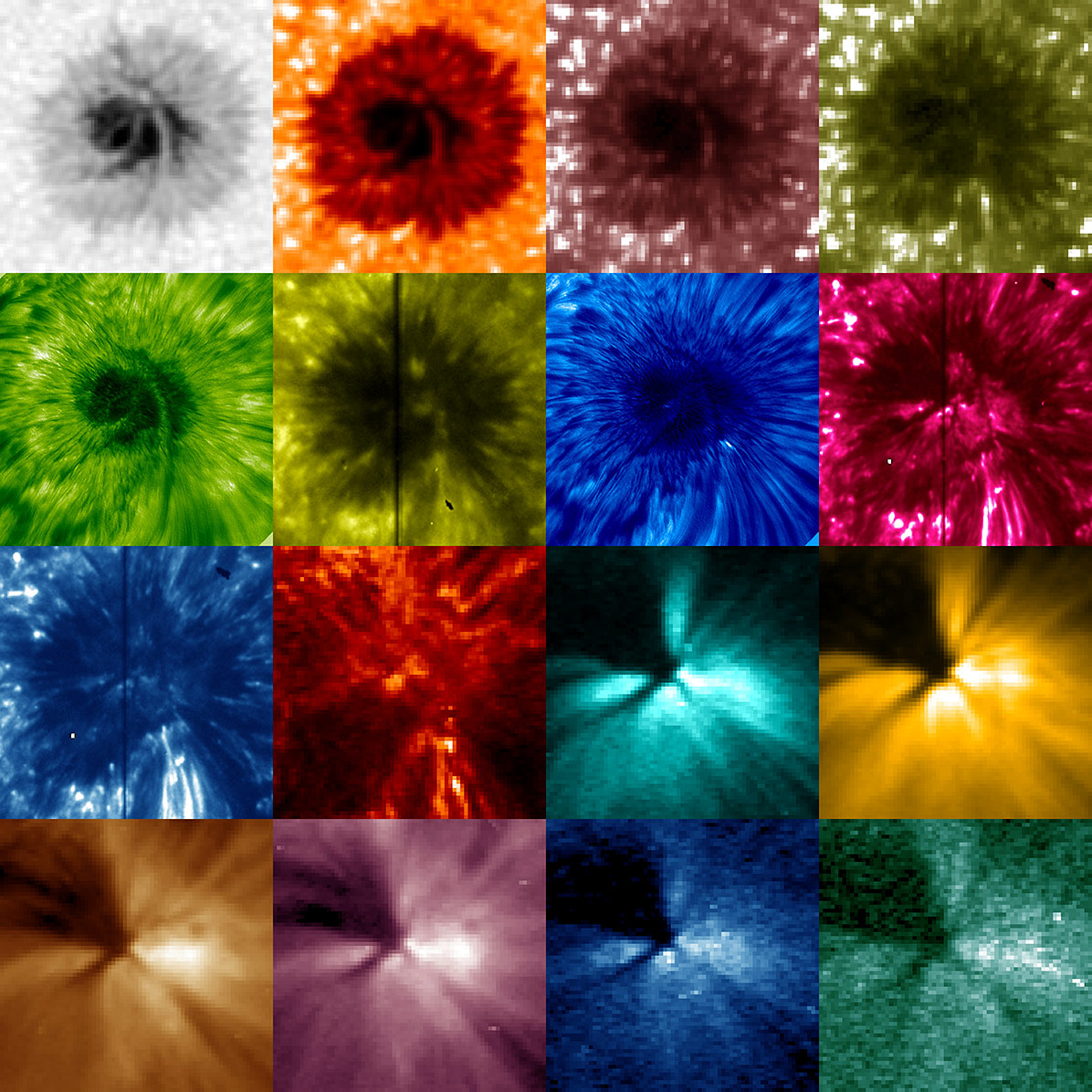Surface of the Sun
The visible surface of the Sun, the photosphere, is the layer below which the Sun becomes opaque to visible light. Ever-changing, it is not a solid surface.
The movie opens with a full-disk view of the Sun in visible wavelengths. Then the filters are applied to small pie-shaped wedges of the Sun, starting with 170nm (pink), then 160nm (green), 33.5nm (blue), 30.4nm (orange), 21.1nm (violet), 19.3nm (bronze), 17.1nm (gold), 13.1nm (aqua) and 9.4nm (green). We let the set of filters sweep around the solar disk and then zoom and rotate the camera to rotate with the filters as the solar image is rotated underneath. DETAILS »
CREDIT: NASA’s Goddard Space Flight Center Scientific Visualization Studio
Sunspots
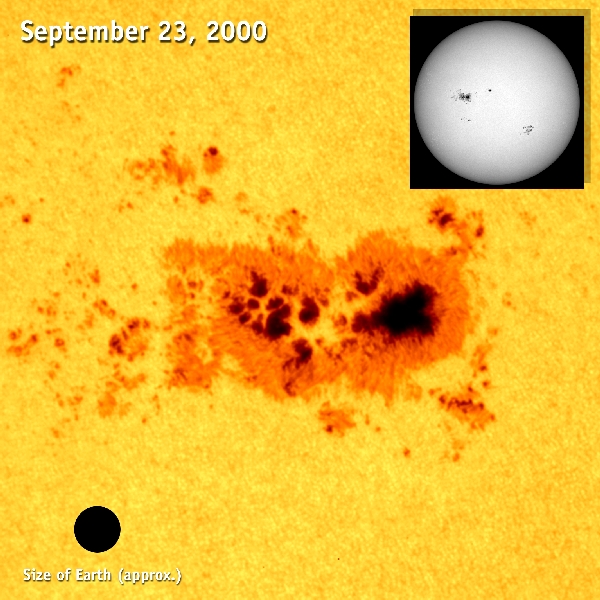
Sunspots appear as dark patches in the solar photosphere. These are areas where strong magnetic field has emerged from below the solar surface. The strong magnetic field suppresses the release of heat into the photosphere making sunspots cooler than their surroundings. Because they are much cooler than the surrounding photosphere sunspots appear darker even though they are still many 1000s of degrees Celsius.
An active region on the sun — an area of intense and complex magnetic fields — has rotated into view on the sun and seems to be growing rather quickly in this video captured by NASA’s Solar Dynamics Observatory between July 5-11, 2017. Such sunspots are a common occurrence on the sun, but are less frequent as we head toward solar minimum, which is the period of low solar activity during its regular approximately 11-year cycle. This sunspot is the first to appear after the sun was spotless for two days, and it is the only sunspot group at this moment. Like freckles on the face of the sun, they appear to be small features, but size is relative: The dark core of this sunspot is actually larger than Earth.
Credit: NASA’s Goddard Space Flight Center/SDO/Joy Ng, producer
Music credit: ‘The Answer’ by Laurent Levesque [SACEM] from Killer Tracks
NASA Scientist C. Alex Young discusses recent sunspot activity during Live Shot.
Credit: NASA’s Goddard Space Flight Center
Filaments
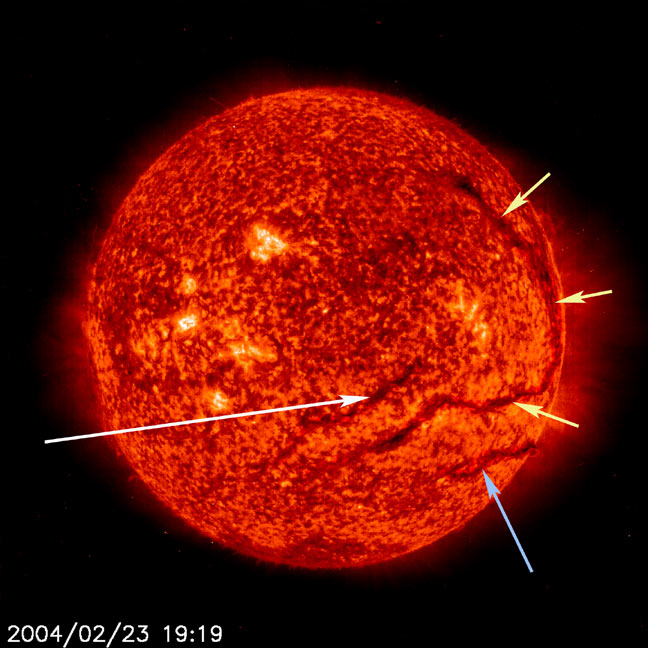
Sometimes magnetic field in the solar atmosphere holds up solar plasma from the chromosphere into the solar corona. The filaments are held up in a kind-of magnetic hammock. The relatively cool filament material appears dark when observed against the bright solar disk. Filaments can stretch far across the Sun measuring 100s of thousands of kilometers. The equivalent of 10 or more Earths lined up in a row.
On August 31, 2012 a long filament of solar material that had been hovering in the sun’s atmosphere, the corona, erupted out into space at 4:36 p.m. EDT. The coronal mass ejection, or CME, traveled away from the sun at over 900 miles per second. This movie shows the ejection from a variety of viewpoints as captured by NASA’s Solar Dynamics Observatory (SDO), NASA’s Solar Terrestrial Relations Observatory (STEREO), and the joint ESA/NASA Solar Heliospheric Observatory (SOHO).
Credits: NASA’s Goddard Space Flight Center/SDO/STEREO & joint ESA/NASA Solar Heliospheric Observatory (SOHO)
Prominences
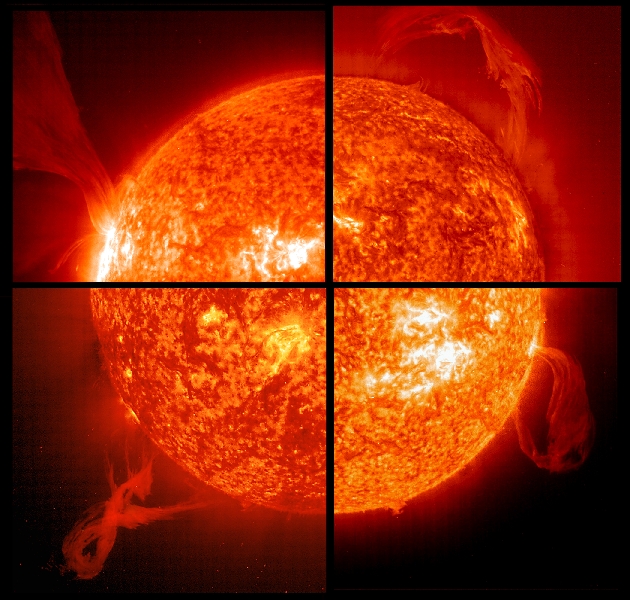
Prominences are really just the same thing as filaments only viewed from a different perspective. Filament are seen on the solar disk however filament are very high up in the solar atmosphere, way above the surface. So when a filament is on the edge of the Sun the filament sticks out with space instead of the solar surface behind it. This makes the filament very bright compared to the dark (cold) background of space. We call a filament viewed this way a prominence. They can be simple looped shaped object or very irregular with a complicated structure.
Over a six-hour period on April 21, 2015, NASA’s Solar Dyanmics Observatory (SDO) observed a wing-like prominence eruption. SDO views the sun in various wavelengths of the extreme ultraviolet, including 171 (shown in gold) and 304 (shown in orange) angstroms.
Credits: NASA’s Goddard Space Flight Center/SDO
Coronal Holes
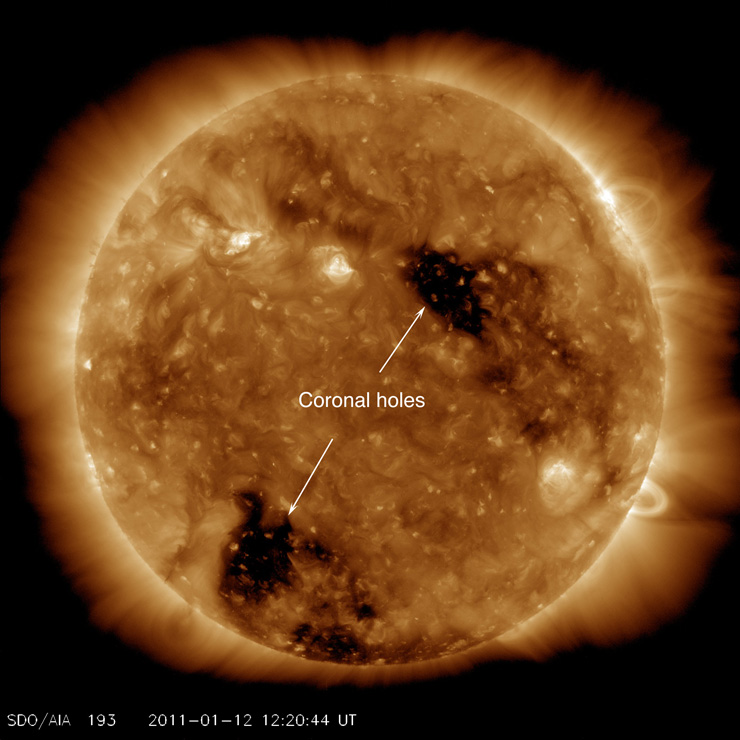
Coronal Holes are areas on the Sun that appear dark when observed in Extreme Ultraviolet and x-ray light. They are regions where the magnetic field on the solar surface opens up into space making it easier for coronal material to escape. Because these areas have less corona, they have less material to emit light and so appear dark compared to the rest of the corona. Coronal holes are where the high-speed solar wind originates. They occur mostly near the north and south poles but they can occur at other places on the solar disk.
Solar Waves
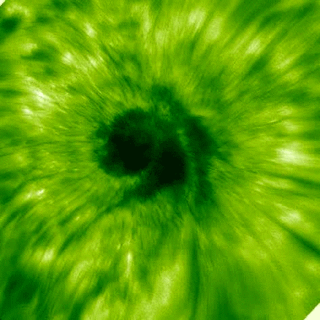
For the first time, researchers have tracked a particular kind of solar wave as it swept upward from the sun’s surface through its atmosphere, adding to our understanding of how solar material travels throughout the sun. Tracking solar waves like this provides a novel tool for scientists to study the atmosphere of the sun. The imagery of the journey also confirms existing ideas, helping to nail down the existence of a mechanism that moves energy – and therefore heat – into the sun’s mysteriously-hot upper atmosphere, called the corona.
Though scientists have long suspected that the waves they spot in the sun’s surface, called the photosphere, are linked to those seen in the lowest reaches of the sun’s atmosphere, called the chromosphere, this new analysis is the first time that scientists have managed to actually watch the wave travel up through the various layers into the sun’s atmosphere.
When material is heated to high temperatures, it releases energy in the form of light. The type, or wavelength, of that light is determined by what the material is, as well as its temperature. That means different wavelengths from the sun can be mapped to different temperatures of solar material. Since we know how the sun’s temperature changes throughout the layers of its atmosphere, we can then order these wavelengths according to their height above the surface – and essentially watch solar waves as they travel upwards.
